#GSLVM3
Explore tagged Tumblr posts
Photo
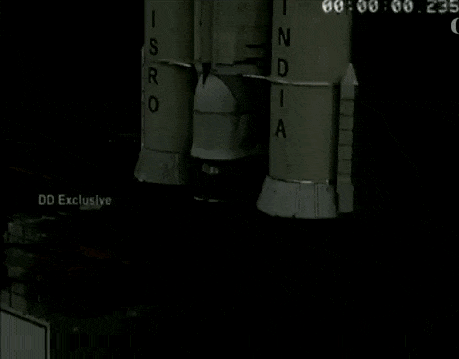
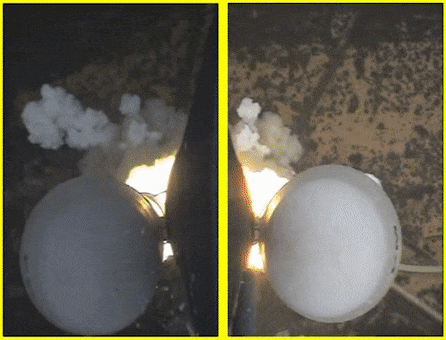
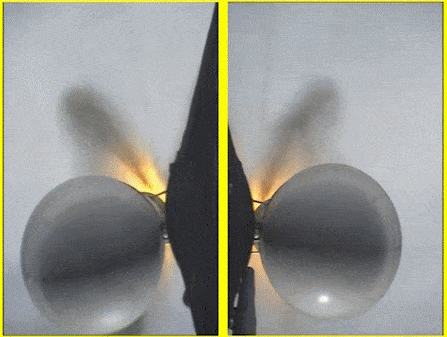



India launches first lunar lander, rover, on Chandrayaan-2 mission (July 22, 2019).
Closing out a week of historic lunar anniversaries, India’s space research organization, ISRO, attempted to make history of their own Monday morning with the launch of the Chandrayaan-2 lunar mission.
The spacecraft is part of the Indian Space Research Organization's, or ISRO, Chandrayaan lunar exploration program, which first saw an orbiter mission launch in 2008.
Chandrayaan-2 is a far more ambitious mission that includes three distinct spacecraft, an orbiter, lander, and rover. If successful, it will mark only the fourth time that a country has softly landed on the moon, behind Russia, the United States, and China.
The 5,244 pound Chandrayaan-2 orbiter will perform orbital measurements and serve as a communications link between ground controllers and the lander. Eight experiments will collect data on the lunar surface and environment, as well as surface mapping. Engineers estimate a one-year lifespan for the orbiter. Named after the founder of Indian space program, the 3,183-pound Vikram lander carries three experiments to measure the Lunar surface, atmosphere, and interior. Additionally, Vikram will transport the mission’s third component, a small, six-wheeled rover named Pragyan. Weighing in at just 60 pounds, Pragyan, which translates to wisdom in Sanskrit, will be India’s first mobile robotic explorer on another world. Its two science experiments will perform laser spectroscopy and X-ray spectrography. Pragyan will travel up to half a kilometer per day with a top speed of 1 centimeter per second. Engineers expect both the Vikram lander and Pragyan rover to operate for one lunar day, or two Earth weeks.

The combined Vikram lander/Pragyan rover, left, is seen integrating with the Chandrayaan-2 orbiter, right at the Satish Dhawan Space Center’s integration building prior to launch. P/c: ISRO A long spiral to the Moon.
Liftoff occurred on the first scientific flight of India’s largest rocket, the GSLV-MkIII, which made its first flight in 2014. Liftoff occurred at 5:13am EDT, or 2:43pm India Standard Time, from the Second Launch Pad of the Satish Dhawan Space Centre in India. Following separation of the rocket’s side boosters, core stage, and payload fairing, Chandrayaan-2 achieved Earth orbit 16 minutes after launch.
Chandaryaan-2 will use a low-energy flight profile for its voyage to the moon that will take up to 44 days to achieve its final orbit. The spacecraft will use its onboard engines to gradually rise its apogee – or furthest point in its orbit – performing a Lunar Orbit Insertion burn 30 days after liftoff. The spacecraft will then spend the next 13 days gradually lowering its apogee to create a circular orbit 100 kilometers above the lunar surface. 48 days after liftoff, the Vikram lander with Pragyan inside is slated to touch down near the lunar south pole. ISRO Chairman Dr. K. Sivan expects the landing to occur on September 7.
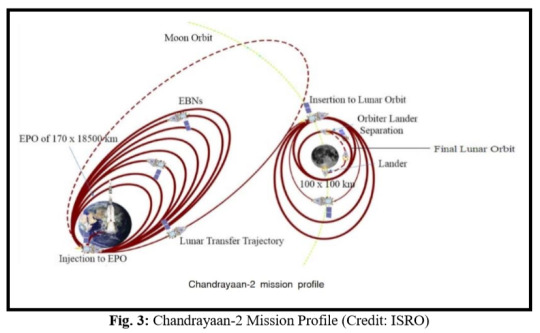
Chandryaan-2 was originally a joint Indian-Russian mission slated to launch in 2011; financial woes, coupled with the high profile failure of the Phobos Grunt Mars mission with Europe ultimately caused Russia to pull out of the project. India’s commitment to complete the missions by themselves pushed the launch to 2018 and further technological hurdles ultimately caused the mission to be delayed to the first half of 2019. Click here to see our GSLV launch vehicle archive.
youtube
P/c: ISRO.
207 notes
·
View notes
Photo

Proud Moment again for #India #ISRO #GSLV #incredibleIndia #PicOfTheDay #BestPic All credits to #scientists & #engineers #MakeInIndia #Rocket #Satellite Geosynchronous Satellite Launch Vehicle Mark III #GSLVMIII #GSLVM3 #GSAT19 Indian Space Research Organisation (at Nagercoil)
#engineers#satellite#gslvmiii#incredibleindia#picoftheday#gslv#india#rocket#gsat19#makeinindia#isro#scientists#gslvm3#bestpic
0 notes
Photo

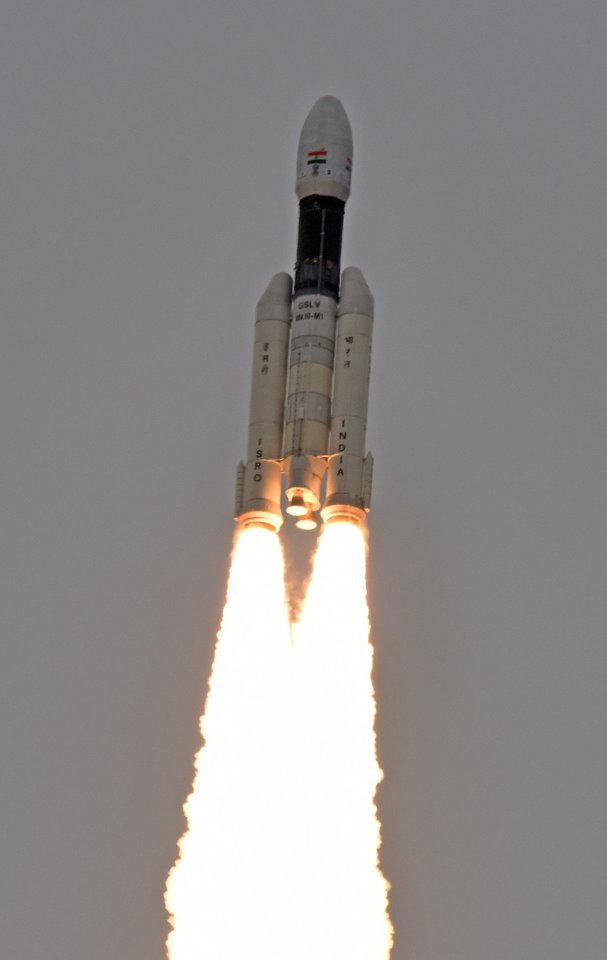

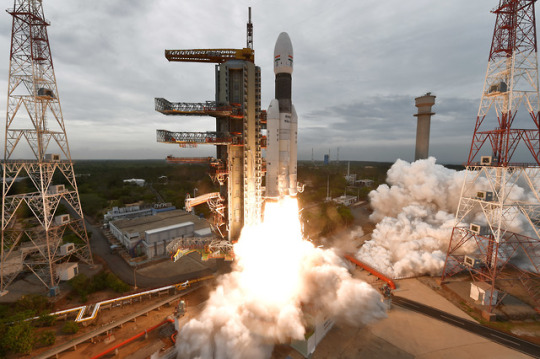
India’s Chandrayaan-2 mission launches on a GSLV Mk III vehicle from the Second Launch Pad at the Satish Dhawan Space Centre, 2:43pm India Standard Time, July 22, 2019. Chandrayaan-2 is India’s first attempt to soft land a rover and lander on the lunar surface, expected on September 7, 2019. P/c: ISRO
93 notes
·
View notes
Photo





GSLV Mk III enters operational service on record-breaking flight.
India’s mammoth third-generation Geosynchronous Satellite Launch Vehicle, known as GSLV Mk III, made its first operational flight early Monday morning, June 5. Riding the booster into orbit was the GSAT-19 communications satellite weighing in at 6,913 pounds - the heaviest payload ever launched by India and over double the lifting capacity of the previous GSLV vehicle. GSLV Mk 3 made its debut on December 18, 2014, launching a scale version of a potential crew vehicle into a ballistic trajectory while testing out the rocket’s side booster and core stage. However, that flight only carried a mass simulator for the cryogenic upper stage which was still undergoing development. After undergoing initial ground testing in early 2017, the upper stage was finally ready for an orbital flight.
Liftoff occurred at 5:28pm local time, or 7:58am EDT, from the Satish Dahwan Space Center. The rocket’s twin 86-foot tall solid rocket boosters provided all the lifting power to send the vehicle into flight with its twin-engined core stage igniting almost two minutes later. Five minutes after liftoff, with both strap-on boosters and the payload fairing already jettisoned, the cryogenic upper stage separated from the core stage and ignited on its first-ever in space firing. The stage performed flawlessly for the ten minutes it fired, placing the GSAT-19 satellite into orbit 15 minutes and 45 seconds after launch.

Numerous changes were made to the GSLV Mk III vehicle following its December 2014 test flight based on data gathered during that flight. To give the rocket better aerodynamic qualities, the solid rocket booster’s nosecones were tapered in towards the core stage and the payload fairing was changed from a cylindrical shape to that of an ogive - similar to the American Atlas V 500 series.
P/c: ISRO.
644 notes
·
View notes